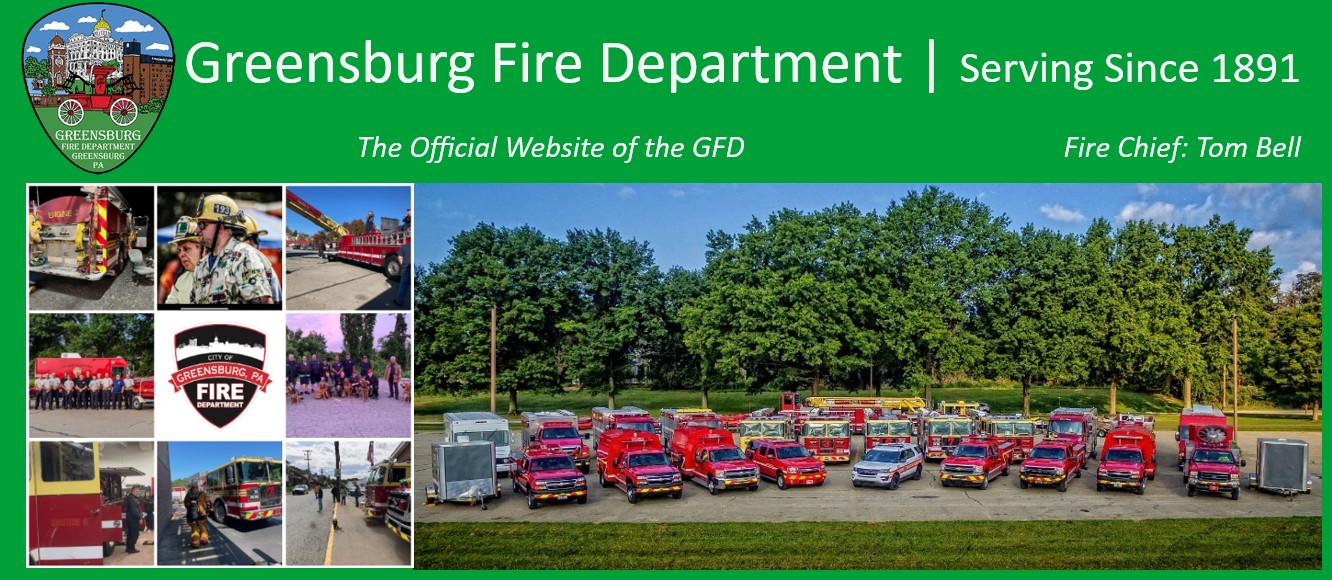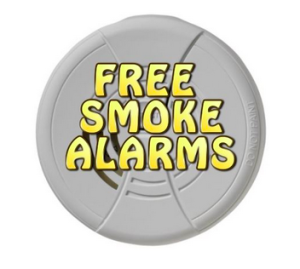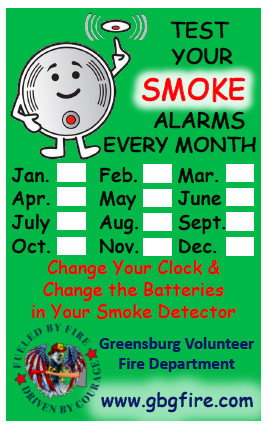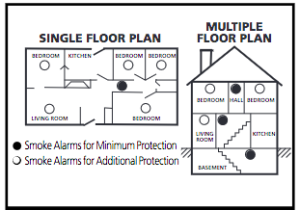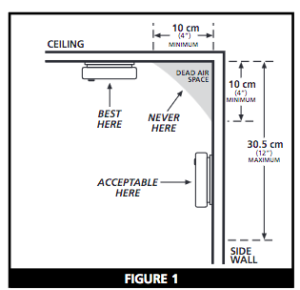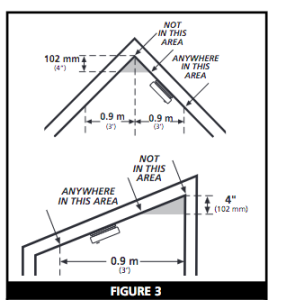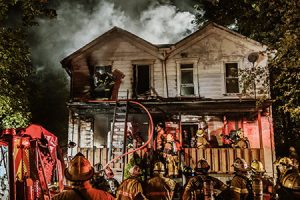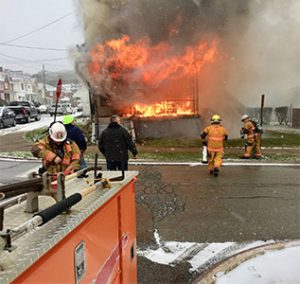Smoke Alarm Safety
Every year people die needlessly because they DO NOT have working smoke alarms in their home. Due to modern furnishings, today’s homes burn 20 times quicker than they did 1990’s. It’s EXTREMELY important to have WORKING smoke alarms in your home. While most American homes have at least one smoke alarm, the National Fire Protection Agency (NFPA) reported that from 2014 through 2018 in 33% of house fires reported, there were no operating smoke alarms. During this same time period, almost 60% of home fire deaths resulted from fires in homes with no smoke alarms or no working smoke alarms. Because of this, having a sufficient number of properly located smoke alarms is essential to maximize the amount of available escape time.
The Greensburg Volunteer Fire Department will provide smoke alarms or batteries to ANYONE in need. The goal of this initiative is to make sure ALL residents (in Greensburg or the greater Greensburg area) have the protection of at least 1 smoke alarm in their home. If you are in NEED of a Smoke Alarm or batteries, PLEASE click on smoke alarm below!
Smoke Alarm Safety Tips
How many smoke alarms do I need in my house?
The minimum you need is at least one smoke alarm on every level of the home — including basements — as well as in every bedroom, and outside of each sleeping area. Larger homes may need extra detectors. There is no such thing as having too many smoke alarms in your home!
Where should I install my smoke alarms?
* Locate the first alarm in the immediate area of the sleeping rooms. Try to monitor the exit path as the sleeping rooms are usually farthest from the exit. If more than one sleeping area exists, locate additional alarms in each sleeping area.* Locate additional alarms to monitor any stairway as stairways act like chimneys for smoke and heat.
* Locate at least one alarm on every floor level.
* Locate an alarm in every sleeping room.
* Locate an alarm in every room where electrical appliances are operated (i.e. portable heaters or humidifiers).
* Locate an alarm in every room where someone sleeps with the door closed. The closed door may prevent an alarm not located in that room from waking the sleeper.
* Smoke, heat, and combustion products rise to the ceiling and spread horizontally. Mounting the smoke alarm on the ceiling in the center of the room places it closest to all points in the room. Ceiling mounting is preferred in ordinary residential construction.
* When mounting an alarm on the ceiling, locate it at a minimum of 10 cm (4”) from the side wall. (see Figure 1).
* When mounting the alarm on the wall, use an inside wall with the top edge of the alarm at a minimum of 10 cm (4”) and a maximum of 30.5 cm (10”) below the ceiling. (see Figure 1).
* Put smoke alarms at both ends of a bedroom hallway or large room if the hallway or room is more than 9.1 m (30 feet) long.
* Install Smoke Alarms on sloped, peaked or cathedral ceilings at or within 0.9 m (3 ft) of the highest point (measured horizontally). Smoke alarms in rooms with ceiling slopes greater than .3 m in 2.4 m (1 foot in 8 feet) horizontally shall be located on the high side of the room. A row of detectors shall be spaced and located within 0.9 m (3 ft) of the peak of the ceiling measured horizontally (see Figure 3).
Where should I avoid installing smoke alarms?
* In the garage. Products of combustion are present when you start your motor vehicle.
* Less than 10 cm (4”) from the peak of an “A” frame type ceiling.
* In an area where the temperature may fall below 0ºC or rise above 40ºC , such as garages and unfinished attics; this should include electrical boxes exposed to these environments.
* In dusty areas. Dust particles may cause nuisance alarm or failure to alarm.
* In very humid areas. Moisture or steam can cause nuisance alarms.
* In areas where the Relative Humidity (RH) is above 93%.
* In insect-infested areas.
* Smoke alarms should not be installed within 3 ft (.9m) of the following: the door to a kitchen, the door to a bathroom containing a tub or shower, forced air supply ducts used for heating or cooling, ceiling or whole house ventilating fans, or other high air flow areas.
* Kitchens. Normal cooking may cause nuisance alarms.
* Near fluorescent lights. Electronic “noise” may cause nuisance alarms.
* Smoke alarms are not to be used with detector guards unless the combination (alarm and guard) has been evaluated and found suitable for that purpose.
How often should I test my smoke alarms?
*Test smoke alarms at least once a month using the test button. DO NOT use an open flame to test the alarm, you could damage the alarm or ignite combustible materials and start a structure fire.
* Make sure everyone in the home understands the sound of the smoke alarm and knows how to respond.
* It is a good habit that when you change you clocks, you change the batteries in your smoke alarm.
* Smoke alarms with any other type of battery need a new battery at least once a year. If that alarm chirps, warning the battery is low, replace the battery right away.
* When replacing a battery, follow manufacturer’s list of batteries on the back of the alarm or manufacturer’s instructions. Manufacturer’s instructions are specific to the batteries (brand and model) that must be used. The smoke alarm may not work properly if a different kind of battery is used.
* Smoke alarms with non-replaceable 10-year batteries are designed to remain effective for up to 10 years. If the alarm chirps, warning that the battery is low, replace the entire smoke alarm right away.
Other facts about smoke alarms.
* Once the alarm sounds, you may have as little as two minutes to escape.
* Never “borrow” a battery from a smoke alarm. Smoke alarms can’t warn you of fire if the batteries are missing or have been disconnected.
* Don’t disable smoke alarms even temporarily. If your smoke alarm is sounding “nuisance alarms,” try relocating it further from the kitchen, where cooking fumes or steam can cause the alarm to sound. Or, replace the alarm with a photoelectric type alarm which is not as sensitive to cooking fumes.
* Always sleep with your bedroom door closed.
* Follow the manufacturer’s instructions for cleaning to keep smoke alarms working well.
* Practice your home fire escape drill twice a year with everyone in your home.
* Practice at night and during the daytime. Practice your drill with overnight guests.
* Have a safety escape plan. Discuss and practice your emergency escape plan as a family. Know two exits from any room in the house.
* Feel if the door is hot. Always feel the door to see if it is hot before opening it to escape. If the doorknob or door is hot, do not use that exit. Use your alternate exit to escape.
* Crawl on the floor. Smoke from a fire rises and so does the temperature. If you crawl on the floor, the smoke and the heat from the fire will be less severe.
* Meet at a designated spot outside the home to help know who has escaped.
* Call the fire department once safely outside. Be prepared to give your full name and address to the operator at the other end of the line. Stay on the line until the operator has the information needed.
* Do not return or go inside a burning building until cleared by the fire department.
